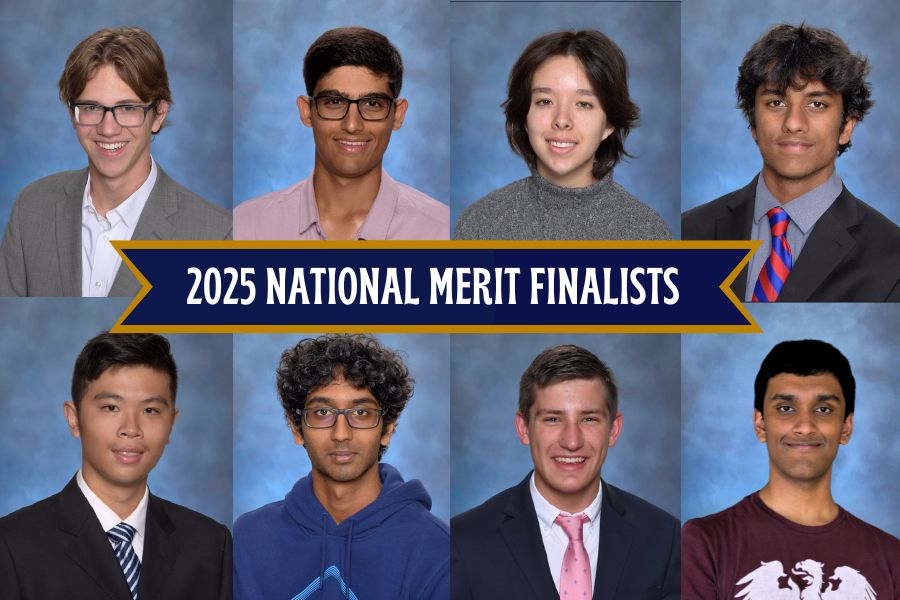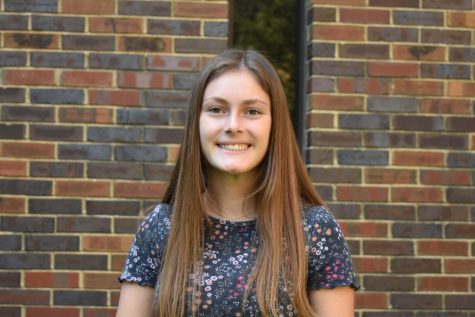I can go shopping without someone assuming that I am shoplifting, or that I am dangerous in the store, or without being followed reads English teacher Kim Hanan-West to a room full of 80 students from across the Metropolitan St. Louis Area. I can easily find band-aids that match my skin tone.
Hanan-West, the sponsor for Gateway to Change, is just one of the white teachers in the room gathered into a circle to read their prepared statements as part of the Gateway to Change conference about economic and racial problems.
“It had never occurred to some students and some teachers that people of color face these things all the time,” Hanan-West said. “White privilege doesn’t mean you haven’t had a hard life. It means that the color of your skin is not something that is making your life harder.”
Two teachers and six students represent the local community to learn more about adversities that minorities encounter every day, including freshman Connor Gusky.
“[The conferences] have made me want to do something. It’s made me want to help out and just be a better person, the best that you can be for yourself and for the community,” Gusky said.
Gateway to Change is put on by the National Conference for Community and Justice (NCCJ) and was created to unite the divided community after the death of Michael Brown.
“Gateway to Change grew out of Michael Brown’s death, in order to get students across the metropolitan area to talk to one another and to discuss not just racial issues, but economic issues and LGBTQ community issues. We do really hard work. We talk about things that make us profoundly uncomfortable, but in a safe environment,” Hanan-West said.
NCCJ’s mission is to “promote inclusion for all people.” At each conference students and teachers take part in different activities to learn about social issues.
One of the activities that the students participated in was the Game of Life. Every student received an envelope, which determined their status in life. They were given a certain amount of money, education and opportunities.
“It was a struggle to rise out of poverty. The kids would get so frustrated. They really see the effect of poverty. They see the effect of class, gender, race and sexual orientation. They see what impact it has on others lives,” Hanan-West said.
In the Game of Life, each envelope contained markings that tipped off the sponsors on how to treat the students, unbeknownst the students. If you were in a lower social class, you received different opportunities.
“It was interesting to see the different things people had to go through when you’re not used to being on the bottom of the social class. I was on the bottom and being stuck was something that I’ve never really had. I’ve always been able to work my way up,” Gusky said.
Freshman A’Lienna Brown was another one of the six students who attended the conferences. She believes the conference helped her become more open-minded and considerate.
“It showed me that people can be victimized,” Brown said. “Not everything is what it looks like. Even if it looks like someone is higher than others, they still might have something going on in their lives.”
While students have attended the conference in the past, Hanan-West feels she has an opportunity to continue to inform the next generation on how to be inclusive and fair, and she wants to take full advantage of this opportunity.
“I feel like I’m in a unique position to unite students on these issues and to show that we have more in common than we have different. I’m also able to help students to develop empathy for people that are not like them,” Hanan-West said. “I feel that that’s my personal responsibility; to embody empathy and understanding within my students, to lead them to that empathy and understanding because, ultimately, a kid who has those qualities is going to be an adult who has those qualities.”


![Sponsor and Junior Principal, Mario Pupillo poses with five students at a Gateway to Change conference. Over 80 students from across the Metropolitan area attend each conference and six of those 80 were chosen from West. “I like knowing what’s going on in our community and knowing how everybody is in contrast to each other and how we’re alike and different. It’s something I’ve never really seen before. [The conferences] opened my eyes,” freshman Connor Gusky said.](https://pwestpathfinder.com/wp-content/uploads/2019/02/g2c-900x595.jpg)
![Smiling in a sea of Longhorns, Fox 2 reporter Ty Hawkins joins junior Darren Young during the morning Oct. 3 pep rally. The last time West was featured in this segment was 2011. “[I hope people see this and think] if you come to [Parkway] West, you will have the time of your life because there are so many fun activities to do that make it feel like you belong here. I was surprised so many people attended, but it was a lot of fun,” Young said.](https://pwestpathfinder.com/wp-content/uploads/2025/10/Edited2-1200x798.jpg)
![West High seniors and families listen as a representative of The Scholarship Foundation of St. Louis, Teresa Steinkamp, leads a Free Application for Federal Student Aid (FAFSA) workshop. This session, held in the library, provided guidance on financial aid, scholarships and student loan options. “This event is very beneficial for any seniors who are applying to or considering applying to colleges after high school [because] the cost of college is on the rise for seniors and parents,” college and career counselor Chris Lorenz said.](https://pwestpathfinder.com/wp-content/uploads/2025/09/DSC_4478-1200x778.jpg)
![Senior Kamori Berry walks across the field during halftime at the Homecoming football game on Sept. 12. During the pep assembly earlier that day, she was pronounced Homecoming Queen. “I thought it was nice that the crowd [started] cheering right away. I know [my friends] were really excited for me, and my family was happy because typically non-white people don't win,” Berry said.](https://pwestpathfinder.com/wp-content/uploads/2025/09/DSC7046-Enhanced-NR-1200x798.jpg)



![Pitching the ball on Apr. 14, senior Henry Wild and his team play against Belleville East. Wild was named scholar athlete of the year by St. Louis Post-Dispatch after maintaining a high cumulative GPA and staying involved with athletics for all of high school. “It’s an amazing honor. I feel very blessed to have the opportunity to represent my school [and] what [it] stands for,” Wild said.](https://pwestpathfinder.com/wp-content/uploads/2025/05/unnamed-6-1200x714.jpg)
![The Glory of Missouri award recipients stand with their certificates after finding out which virtue they were chosen to represent. When discovering their virtues, some recipients were met with contented confirmation, while others, complete surprise. “I was not at all surprised to get Truth. I discussed that with some of the other people who were getting the awards as well, and that came up as something I might get. Being in journalism, [Fellowship of Christian Athletes and] Speech and Debate, there's a culture of really caring about truth as a principle that I've tried to contribute to as well. I was very glad; [Truth] was a great one to get,” senior Will Gonsior said.](https://pwestpathfinder.com/wp-content/uploads/2025/04/Group-Glory-of-Missouri.jpg)


